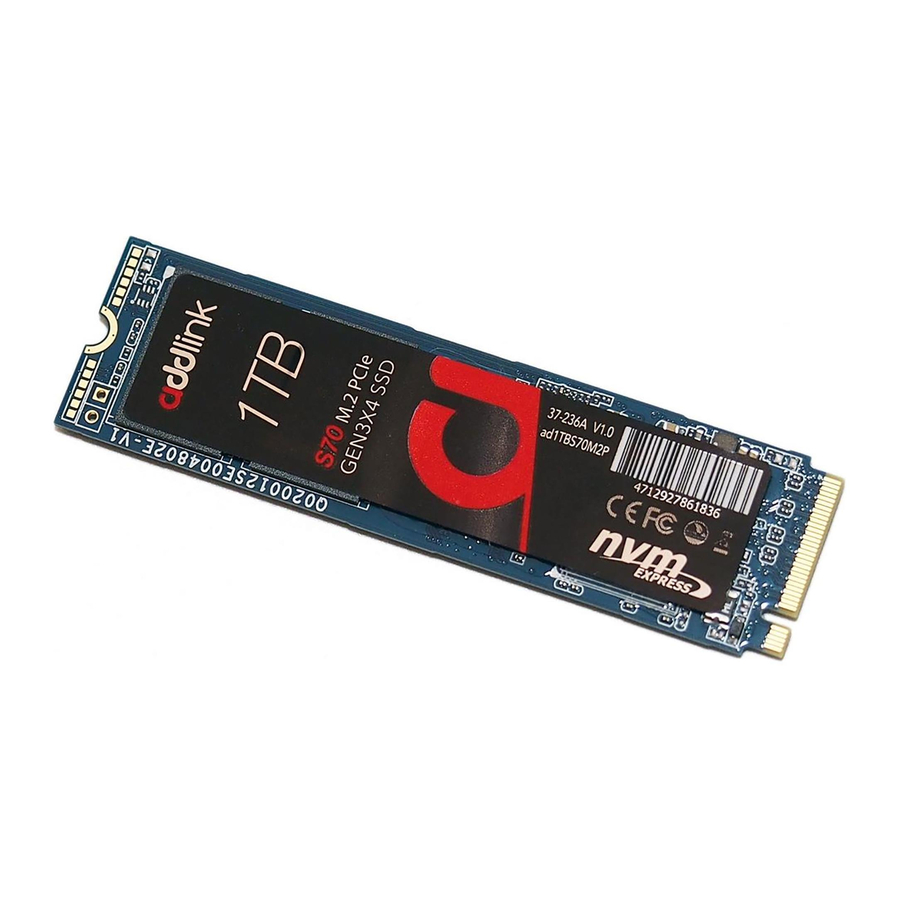addlink M.2 PCIe Benutzerhandbuch - Seite 11
Blättern Sie online oder laden Sie pdf Benutzerhandbuch für Lagerung addlink M.2 PCIe herunter. addlink M.2 PCIe 13 Seiten.

M.2 PCIe
Users Manual
INTRODUCTION
REQUIRED TOOLS
& PREPARE
WINDOWS DRIVERS
& CLONE
DESKTOP INSTALL
LAPTOP INSTALL
GLOSSARY
Computer bus interfaces provided through the M.2 connector are
PCI Express 3.0 (up to four lanes), Serial ATA 3.0, and USB 3.0.
The M.2 connector has different keying notches that denote
various purposes and capabilities of M.2 hosts and modules,
preventing plugging of M.2 modules into feature-incompatible host
connectors. In addition to supporting legacy Advanced Host
Controller Interface (AHCI) at the logical interface level, M.2
specification also supports NVM Express (NVMe) as the logical
device interface for PCI Express SSDs implemented as M.2
storage devices.
NVM Express (NVMe)
NVMe or Non-Volatile Memory Host Controller Interface
Specification (NVMHCI), is a technical standard that specifies the
operation of host bus adapters accessing solid-state drives (SSDs)
attached through the PCI Express (PCIe) bus. Basically, NVMe is a
driver between a host and a device. As a logical device interface,
NVM Express has been designed from the ground up, capitalizing
on the low latency and parallelism of PCI Express SSDs, and
mirroring the parallelism of contemporary CPUs, platforms and
applications. By allowing parallelism levels offered by SSDs to be
fully utilized by a host's hardware and software, NVM Express
brings various performance improvements. Therefore, to
experience the best performance, NVMe is best implemented with
a direct PCI Express connection, foregoing any backwards
compatibility with SATA. NVM Express should not be confused with
SATA Express, which is a host bus specification (or physical
interface) that supports both SATA and PCIe storage devices, and
suffers from limitations that are not bound to NVMe.
11
